University of Washington
The University of Washington (UW, Washington, U-Dub) is a public research university in Seattle, Washington. A founding member of the moribund Pac-12, the university has a robust NCAA Division I athletics program to complement its world-class research output and high-achieving student body. This article will discuss the main campus in Seattle, but the university also operates two satellite campuses in Tacoma and Bothell.
Located close to downtown Seattle, the university offers students numerous opportunities to explore city life off campus when they aren’t engaged with one of the hundreds of student organizations and clubs registered with the student union. Adventurous students can also travel a relatively short distance to the hiking, mountain biking, and camping opportunities in the Cascade Mountains to the east of the city.
The UW campus is traditional and beautiful with unique architectural and historical details. The Suzzallo Library, in particular, is a special place on campus for research or studying. Immediately outside the library’s Hogwarts-style Reading Room is a permanent exhibit of the Bhutan Book, one of the world’s largest books at seven feet by five feet, a favorite stop for visitors. Visitors in the spring time are also drawn to the UW Quad, which is famous for its gorgeous cherry blossom trees.
Forbes has listed the UW as a “Best Buy” university for the great value of the education and the many opportunities available to students here. The university is also known for its close proximity to Seattle’s vibrant tech scene, a record of and commitment to environmentalism, and its global engagement through research partnerships, study abroad programs, and the diversity of its faculty and student body.
Highlights
Majors
Campus
Sports
Lowlights
Support
Very Rainy
Pre-Med
Contents
- Students who thrive
- Students who may have challenges
- Successful applicants
- How the application process handles majors
- Academics
- Barrett, the Honors College
- Academic support
- Support for disabilities & learning differences
- Financials
- Housing & transportation
- Social life & recreation
- Athletics & campus spirit
- Health
- More information
Quick Info

Students who thrive
Students who thrive at UW are self-motivated to study hard for the university’s difficult and competitive courses, seek out social opportunities and make new friends outside of a structured social environment, and explore a large campus in a big city without much guidance. Like most large public universities, campus-provided social and academic support can be limited, so independence is a defining trait of successful UW students.
With a leading research program, the university draws in students who are intellectually curious and interested in research-driven academic fields, including STEM and the social sciences. Engineering and business students are also well-served by the university’s strong schools in those disciplines, each boasting several undergraduate majors that are highly interdisciplinary.
UW’s location near the heart of Seattle offers students unique experiential opportunities, particularly in tech companies and medical research institutions. As a result, students’ access to internships and jobs in tech is second only to those studying in the San Francisco Bay Area.
UW students need to be prepared for lots of rain: Seattle has the most rainy days of any city in the United States. If you like overcast skies and want to study at a large, world-class campus in an innovative city, UW might be right for you.
Students who may have challenges
Students who require extra support, socially or academically, may find UW to be a challenging place to live and go to school. The university’s support options are fairly limited and decentralized; some students may find a niche of support and community that enables them to thrive, but others may struggle to line up the help they need to succeed.
Big cities and big universities are culturally dynamic and institutionally bureaucratic. While the dynamism of a campus like UW Seattle creates space for communities from historically marginalized backgrounds to come together and build networks of support, the bureaucracy of the institution may not be responsive to students’ immediate needs.
Students who lack self-motivation, or who depend on close relationships with teachers and classmates to progress through course material, may find the rigorous and competitive academic environment to be daunting. After completing tough lower-division courses, the academic culture mellows out for most students, but by that point, around 740 out-of-state students per class year will have withdrawn from UW or transferred to other universities (based on data derived from UW’s 2022-2023 Common Data Set).
Students intending to complete a pre-med track and apply to medical school should only do so at UW if they are at least in the top quarter to half of admitted students, based on GPA, rigor of coursework, and test scores (AP and/or SAT/ACT). The prerequisite lower division science courses are very difficult and competitive, which can make it difficult for even fairly strong students to earn the grades needed to be competitive medical school applicants.
With the most rainy days of any city in the United States, the weather in Seattle may be a strong deterrent to students who are impacted negatively by overcast weather or who just prefer warm, sunny weather.
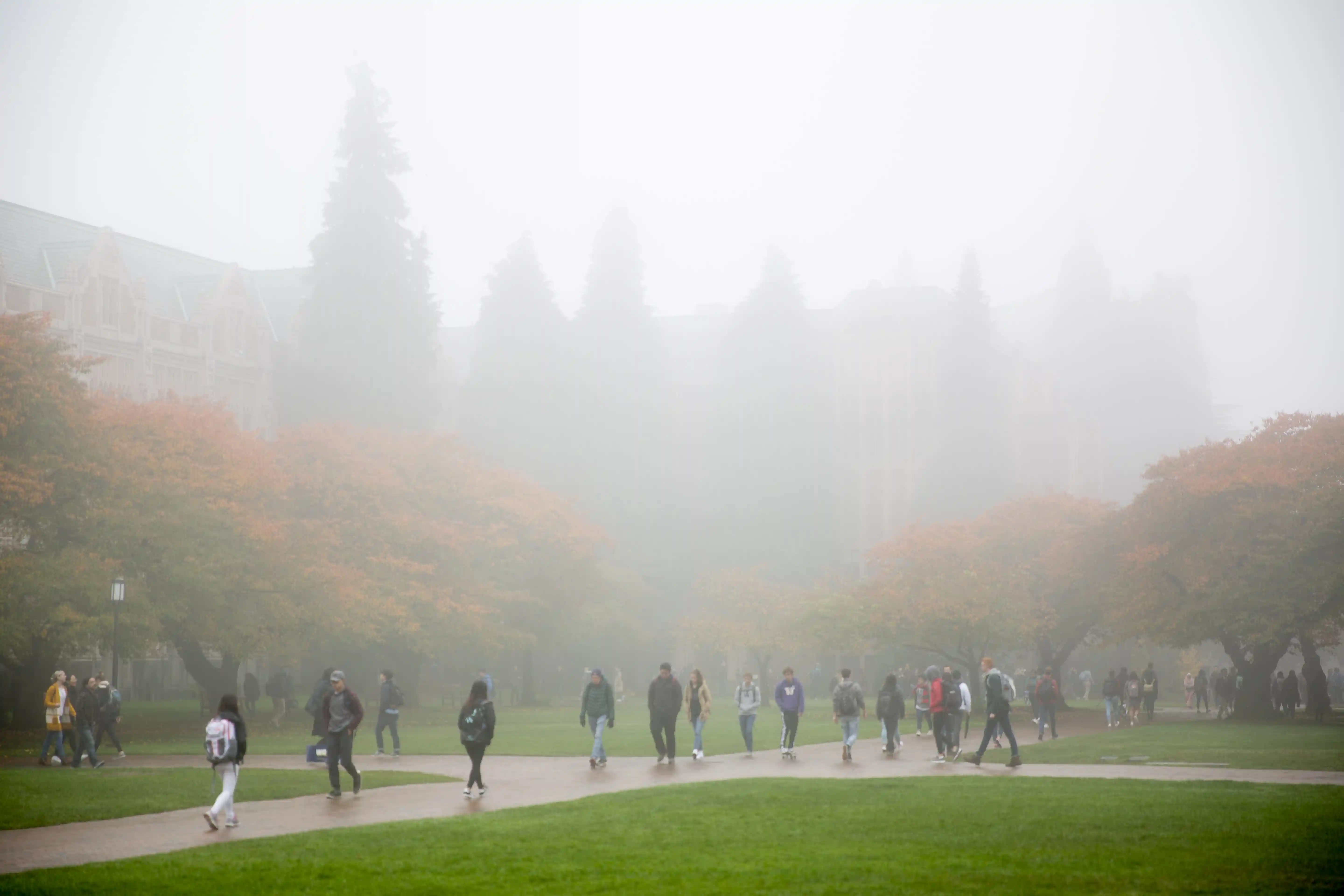
Successful applicants
Successful UW applicants are strong students who are prepared for a rigorous academic experience and aware of the field they want to pursue. Although UW allows students to change majors, not every program offers that option, so students applying to highly competitive programs typically must demonstrate both aptitude and interest in those fields during the freshman admission process.
Almost 95% of UW admitted students have a high school unweighted GPA of 3.5 or higher, while 75% have a GPA of 3.75 or higher. The average GPA of admitted students is 3.83. The percentage of Washington residents admitted to UW is 54%, while it is slightly lower for out-of-state residents at 46%. However, these averages mask important admissions details. Computer science and computer engineering, in particular, are such popular majors that they are quite difficult for in-state applicants to gain admission (25%) and nearly impossible for out-of-state applicants to gain admission (2%).
The UW admissions process is officially test-optional, but is functionally test-free for most applicants. The university says that applicants will not benefit or lose out as a result of submitting test scores, because test readers will not have access to submitted scores. The only time that admissions officers may look at SAT or ACT scores, and the only time they may influence an admission decision, is when an application with strong test scores falls on the border between admission and rejection. In that specific circumstance, strong scores may help an applicant gain admission, but UW admissions also says a lack of scores or low scores will not prevent such a student from being admitted. This test-optional process appears to be unique among universities. For more information, see the UW’s description of its holistic review process.
Among students who choose to submit scores, the SAT Composite 50th percentile is 1420, and the ACT 50th percentile is 32.
About one third of admitted first-years come to UW from out of state, while about one quarter of the overall student population is from out of state. These numbers reflect the out-of-state students who transfer to other universities after starting at UW.
Students are asked to declare intended majors, or apply directly into majors where appropriate, on their Common Application supplement. See How majors are handled in the section below for more information.
Transfers
The UW admits 70% of transfer applicants from Washington state community colleges, and about 25% of applicants from all other 2- and 4-year colleges and universities. Transfer students apply directly into their intended major, which is typical for public institutions. Transfer applicants must have a minimum college GPA of 2.0, but the middle 50% of GPAs is 3.24 to 3.85, so successful applicants’ GPAs typically greatly exceed the minimum requirements. Students with GPAs over 3.5 are more likely to be admitted.
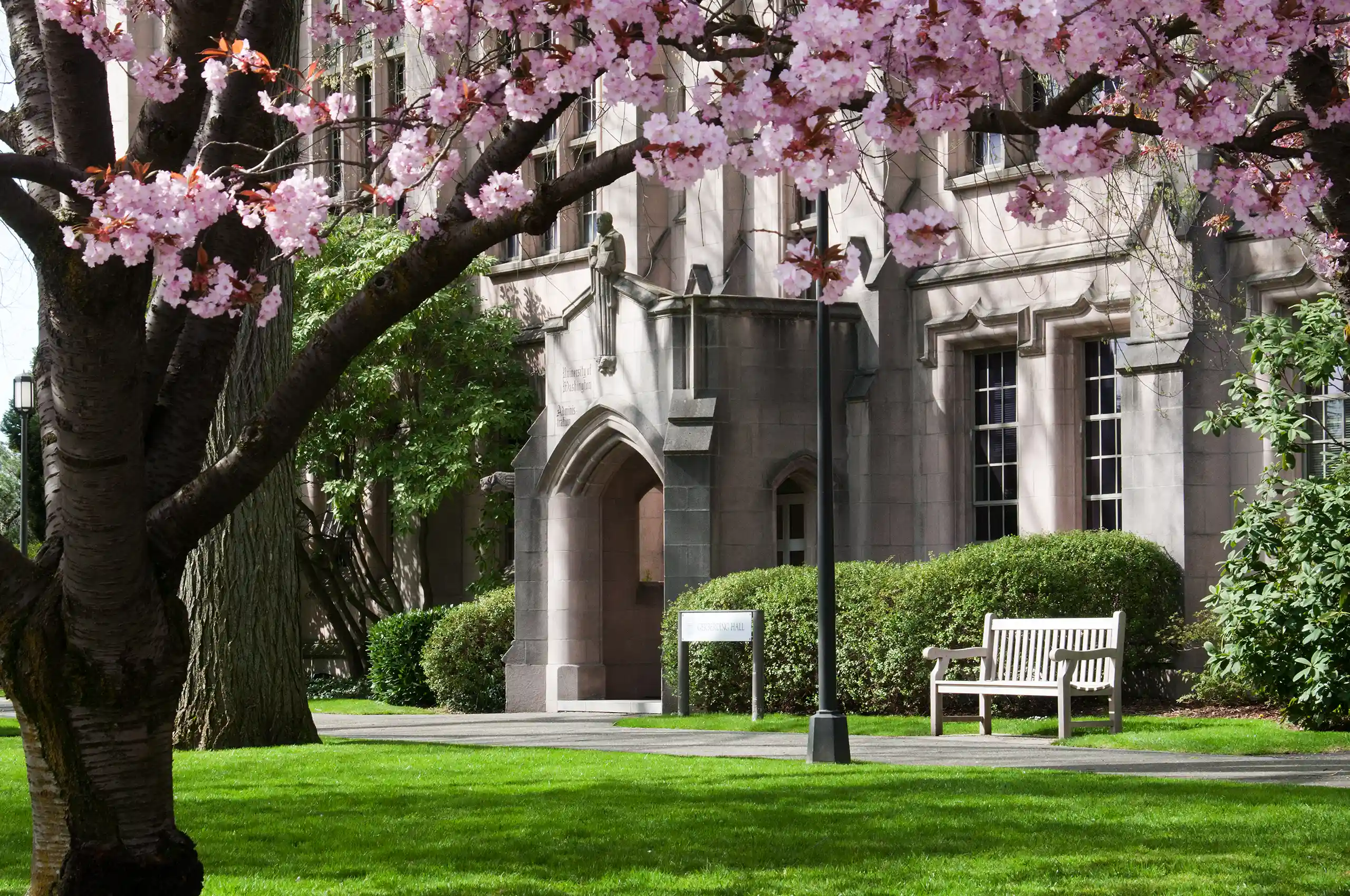
How the application process handles majors
UW admissions asks freshman applicants to list up to two major choices on their Common Application supplement. When choosing a major, applicants must consider whether their choices include open majors, minimum requirement majors, or capacity-constrained (impacted) majors.
Most majors at UW are open majors, which allow any admitted student to declare at any time during their undergraduate years. Some majors have minimum academic requirements to declare, including a minimum GPA and course prerequisites. These majors are generally declared by current UW students who have completed lower-division requirements and meet the GPA requirements. Capacity-constrained majors are selective: meeting the minimum requirements does not guarantee admission, and a secondary application may be required. Visit the link below to review all majors and sort by major type.
Transfer students apply directly into majors. The same major categories apply for transfer applicants.
The UW states that applicants’ choice of major on the freshman application may influence admission decisions. As a result, Capstone advises students to think carefully about the majors they list on their application. If listing a direct-admit or capacity-constrained major first, it’s wise to include an open major for the second choice. Students may also want to identify additional universities with more relaxed admission policies in the preferred major as alternatives in case they aren’t admitted to the preferred major at the UW.
Some majors admit freshmen directly and have very limited capacity to admit students who want to transfer from a different major after enrolling at the university. These include the majors in the box below. In order to be admitted to one of these majors, students must list it as their first choice on the freshman application and they should not count on being able to transfer into these majors later. So, if admitted to their second-choice major, students should decide which is more important to them: attending UW or completing their first-choice major.
Direct-admit majors
- Architecture
- Biochemistry
- Business administration
- Chemistry
- Computer science
- Computer engineering
- Composition (music)*
- Construction management
- Engineering (any major in the College of Engineering)
- Guitar (music)*
- Informatics
- Jazz studies (music)*
- Music
- Music education
- Neuroscience
- Orchestral instruments (music)*
- Organ (music)*
- Piano (music)*
- Statistics
- Strings (music)*
- Voice (music)*
* Music majors require audition on primary instrument
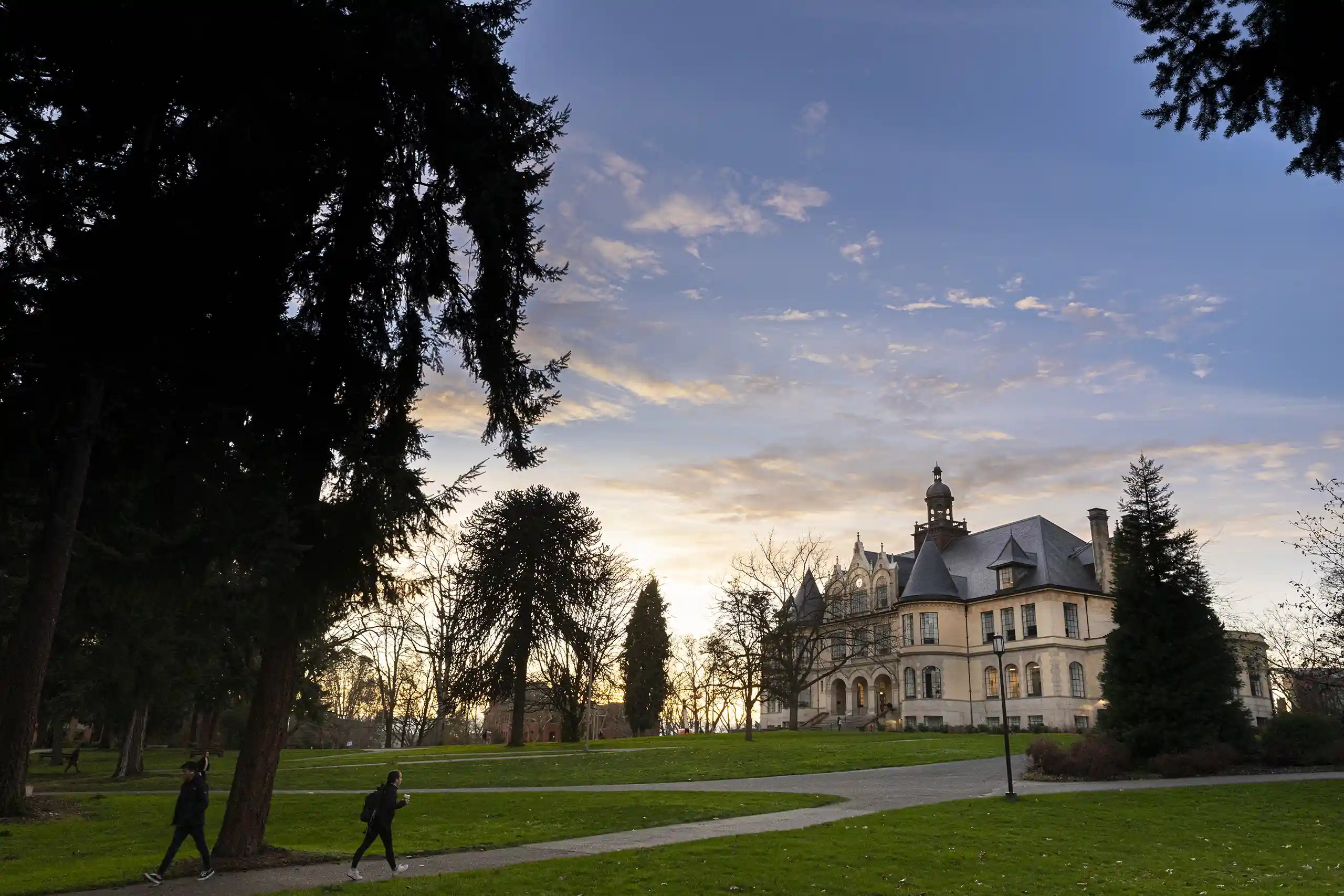
Academics
The UW is a large university with 180 majors and hundreds of course offerings. The university is particularly strong in STEM fields, Computer Science & Engineering, Engineering, and Business, though students have commented that social science and humanities students will also receive a world class education. For instance, the Scandinavian Studies department is one of the largest in the country.
Student reviews for professors also tend to be very high; the UW’s faculty have an A rating on Niche.com, though some commenters note that a sense of anonymity and distance from the instructors may be common in large lower division courses.
However, it may be hard for students to get into many of the most popular majors, as they are often capacity-constrained and very selective. And as a large public university, registration for popular and prerequisite courses is often very competitive.
The most capacity-constrained and selective majors are in STEM disciplines, including Health, Computer Science & Engineering, Engineering, and Natural & Environmental Sciences. Business and Design majors are also fairly selective. Arts & Humanities and Social Sciences programs have larger numbers of open majors and majors with minimum requirements.
The UW may not be an ideal choice for students intending to go on to medical school. Lower-division courses in the sciences tend to be very challenging, very competitive, and very large — up to 700 students. Students often have a difficult time achieving high grades in these courses, which can make medical school applications less competitive. Pre-med students whose admission statistics (GPA and test scores) place them in the bottom 50% of admitted students and/or who have not completed advanced science courses (AP, college level, etc.), may want to consider other colleges ahead of UW.
Interested in Pre-Med?
Reach out for your free consultation today!
Disability Studies is offered as a major at UW, which is rare among universities overall. Students interested in Disability Studies will want to seriously consider UW. See the sidebar at right (desktop) or Quick Info section above (mobile) for a more complete listing of unique, rare, and interesting majors offered here. Click the button below for UW’s full major catalog.
The university’s most popular degree fields are:
- Social sciences (13%)
- Biology & life sciences (12%)
- Computer science & computer engineering (11%)
- Engineering (9%)
- Business and marketing (8%)
UW offers a wide range of study abroad programs for undergrads, with partnerships at 70 universities around the world. Students can study abroad through traditional programs, departmental exchanges in a particular academic field, with UW faculty, in short-term programs during short term breaks like Spring Break, and through internships with partner NGOs.
UW offers numerous undergraduate research opportunities through the Office of Undergraduate Research and its many academic departments. The Mary Gates Endowment for Students offers research and leadership scholarships; the Ronald E. McNair Post-Baccalaureate Achievement Program is a PhD preparatory program for first-generation, low-income, and/or minority students. Students will also have informal research opportunities with professors and graduate students, and access to internship opportunities with tech and medical industry companies in the Seattle metro area.

UW School of Medicine
The University of Washington School of Medicine (SOM) is a highly selective institution offering a wide range of programs, including MD, MD/PhD (Medical Science Training Program, MSTP), and professional degrees in health sciences, and Masters and Doctorates in rehabilitation medicine, as well as residencies and fellowships.
The MD program admits very low numbers of out-of-state students, with one major exception listed below, because of the school’s policy mandate to serve students from the WWAMI service area (see below). It is also very selective, so only top-performing students from its service area are likely to be admitted.
In addition to Washington state residents, the UW SOM also considers applicants from Wyoming, Alaska, Montana and Idaho (WWAMI) to be in-state for the purposes of admission, as those states do not have medical schools of their own. Over 95% of MD students are from WWAMI states.
Non-WWAMI students interested in the Medical Scientist Training Program (MSTP, offering MD/PhD) or professional degree programs are not subject to the same residency requirements as MD applicants.
UW undergraduates, especially non-WWAMI students, do not have an advantage in the UW SOM’s admission process, but because of the medical school’s main campus location, undergraduates may have the opportunity to volunteer or complete other patient-engagement experiences within the medical school.
Interested in Medical School?
Reach out for your free consultation today!
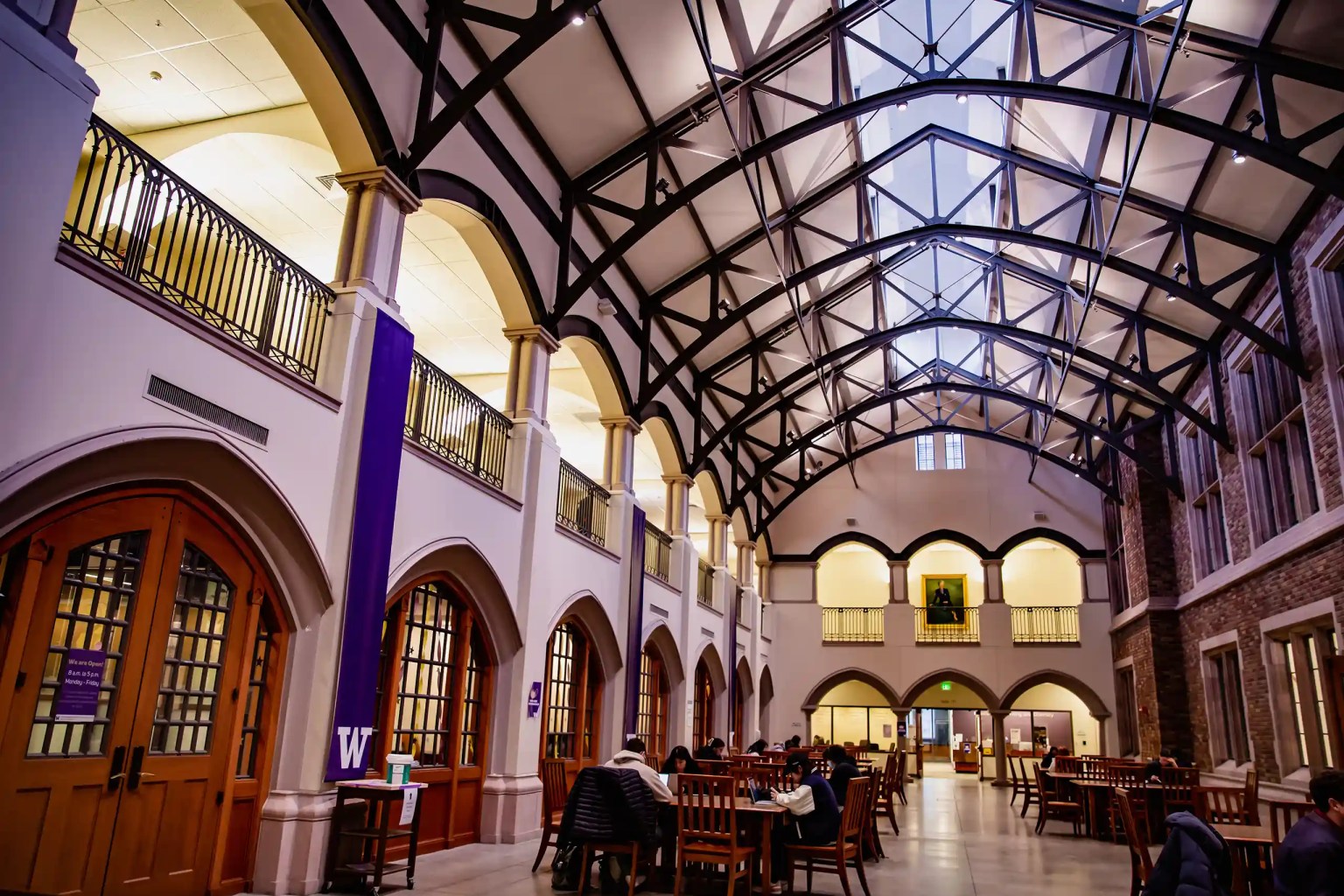
Academic support
Academic support at UW appears to be decentralized, which can make it difficult to access. Students requiring extra help will need to put in some effort to identify sources of support, and may want to seek out private and off-campus options before starting their first term. One reviewer from Niche.com says that they have “found it difficult to seek help and felt that resources were limited. I would not recommend the UW for students who require more guidance.” A different reviewer advises students to proactively attend professors’ and TAs’ office hours for more direct support, which Capstone recommends all college students do regardless of the quality of other academic support options on campus.
The CLUE Tutoring program offers tutoring in Biology, Chemistry, Math, Physics, Writing, and Computer Science & Engineering. Sessions are available both online and in person. For the most popular undergraduate courses at UW, students can also attend discussion and exam review sessions.
Academic Success Coaching, a peer coaching program, offers one-on-one academic coaching in person or on Zoom. Students can access coaching for general academics, or specifically for Engineering programs and Computer Science & Engineering programs.
The Office of Minority Affairs & Diversity provides additional support through its Academic Counseling Services and related programs. Learn more on the OMAD website.
Support for disabilities & learning differences
Disability services at UW are similar to those provided at other large, public universities: they cover the basics, but aren’t particularly robust. Notably, the staff at Disability Resources for Students (DRS) is small for the size of the campus. As a result, students may not always be able to get timely appointments with DRS staff, and their support may not be as personalized as they would like. Students who need access to tutoring or academic coaching will not find them at DRS. Instead, they are expected to make use of the programs available to the student body at large, listed above under Academic support. As noted in the section above, students have commented that academic support options are fairly limited and may be difficult to access.
The campus offers fairly standard accommodations, including housing accommodations. A list can be found on the DRS website under Accommodations.
UW is one of a select number of universities offering a Disability Studies major.
Looking for LD admissions support?
Navigating the application and admissions process for students with disabilities or learning differences can be especially challenging. If you need guidance and support, Carolyn Weirick and the other admissions consultants at Capstone offer personalized, expert admissions services for students with a wide range of differences, disabilities, needs, and challenges. Contact us today for a free consultation.

Financials
As a public university, UW is more affordable than most private schools. Out-of-state and international students will pay about $60,000 per year, about 75% of the typical cost of a full-price private college, while Washington state residents will pay about $31,000 per year. Because the base cost of education here is lower than at private schools, the university has less financial aid to give out. On average, UW meets 75% of students’ demonstrated financial need. Around 16% of students with no demonstrated financial need will receive merit aid, with an average disbursement around $4,000.
There are limited scholarship opportunities available through the university, and those are primarily for very high-performing students from Washington state, so other students who expect to need financial assistance are advised to look for private scholarship opportunities or other college options.
Housing & transportation
Although on-campus housing is not guaranteed at the UW, nearly every student who wants to live in the dorms will be able to. Around 70% of first-years and 30% of all undergrads live on-campus, in one of the dozen dorms or numerous campus-owned apartment buildings. Rooms in the dorms are doubles, and each room has a private bathroom. Every floor has a kitchen and a lounge area for residents, which creates a meaningful opportunity to make friends and develop a community when starting off at this very large university. At $16,000 per year, on-campus housing at the UW is a bit lower than the average among West Coast universities, which can often reach up to $20,000 per year. UW also offers gender-inclusive housing options, which students can select on the regular housing application.
In spite of the strong selling points above, Niche.com student reviewers gave UW dorms fairly mediocre reviews, averaging a B-. In our estimation, this grade undersells what UW has to offer. It’s important to consider that, although housing can be expensive in Seattle, the university is not experiencing a housing crisis to the same degree as universities in California, and the amenities available in its dorms often far exceed what other West Coast public universities have to offer.
When it comes to the dorm food at the UW, however, there seems to be a consensus that it isn’t very good.
For students who are certain they want to participate in and commit to Greek life, they have the option of living in a residential Greek house starting in their first year. With around 70 chapters, 4,700 fraternity and sorority members, and 3,500 residents in Greek houses, such students will find and be able to join a strong community from the start of their college experience. Before making a decision to do this, however, it’s important to consider all your options and make sure you’re ready for the kind of culture and lifestyle that you will experience in a fraternity or sorority.
Transit
Most students will not need a car while studying at UW. Sound Transit’s light rail 1 Line runs directly through campus with a station in the University District, and continues through Downtown Seattle all the way to and past Sea-Tac Airport. Students who expect to be flying to and from campus between terms will be able to catch a train at the airport and get off at UW, and vice versa, without having to make any connections. In addition to the light rail line, Sound Transit operates the ST Express bus service throughout the Seattle metro area.
In the coming years, starting in 2024, Sound Transit will be opening several new light rail lines and stations throughout the region. By the early 2030s, Seattle hopes to have one of the largest, most modern, and most efficient light rail systems in the United States. While that will certainly help students down the line, the current service on the 1 Line should be sufficient for students to get between the airport, downtown, and campus without hassle.
For upper division students, commuter students, or those who expect to be taking frequent trips into the mountains to hike, bike, or camp, it may be worth bringing a car to campus, with the advisory that parking is expensive on and around campus.
Seattle is a busy city with lots for students to do. With easy access to downtown on Sound Transit’s 1 Line, students can take part in the city’s nightlife and amenities throughout the year. Reviewers on Niche.com have specifically called out the integrated urban feel of the campus and the off-campus opportunities that it enables. One reviewer in particular called the UW “a city within a city” due to the near-endless social opportunities on and off campus.
For students who want to stay closer to campus, the university is home to hundreds of Registered Student Organizations (RSOs) and clubs organized around interest in everything from film appreciation, theater and dance performance, and language learning, to mountain biking and hiking, community service, and politics. The campus is fairly left-leaning in a left-leaning city, and students have reported strong political activism on campus. Politically conservative student organizations are active on campus, but such students may have the experience of being a distinct minority on campus and in the city.
The student union, The HUB, is well-resourced and offers many activities for students to participate in, including student government through the Associated Students of the University of Washington (ASUW). Students can tune up their bikes at the ASUW Bike Shop, grab a bite to eat, shop for Husky merch, and play esports, table tennis or bowl.
The Greek community includes around 70 fraternity and sorority chapters organized into four councils. About 15% of the student body, or 4,700 students, is active in a Greek chapter, and 3,500 live in a chapter house. With a relatively low percentage of the student population involved in Greek life, fraternities and sororities do not dominate social life at UW, but it provides a vibrant social scene for those who are interested.
Interested students can participate in Army, Navy and Air Force ROTC on campus, with a Marine option for Navy ROTC. Most colleges offering ROTC do not have a Marine program, so students interested in the Marine Reserves should carefully consider the UW for their college list.
Athletics & campus spirit
The Washington Huskies have NCAA Division I sports programs in football, men’s and women’s basketball, men’s and women’s soccer, baseball, softball, track & field, and several other sports. The sports programs are popular among students and alumni, so games are often well-attended and lively. Students who are looking for a university with lots of spirit and interest in sports will be happy here.
Washington was a founding member of the Pac-12, but will be leaving for the Big Ten with Oregon, UCLA, and USC in 2024. At the same time, Arizona and Arizona State, the University of Colorado, and the University of Utah will join the Big 12; and UC Berkeley and Stanford will head to the Atlantic Coast Conference (ACC). The Pac-12 will continue as a two-member conference of Washington State and Oregon State, but appears unlikely to survive past 2024. As a result of these enormous changes to West Coast intercollegiate athletics, the college sports experience, even at universities like Washington with robust programs, is likely to change substantially. Many more of the university’s sporting events will take place far away, making it difficult for supportive students to travel for away games, and reducing the attendance at home games.
UW Recreation offers several club sports and a quarterly intramural program, and provides great resources and opportunities for students who love the outdoors and outdoor activities. UWild Adventures offers backpacking, camping, rock climbing, snowshoeing, cross-skiing, and other adventurous opportunities, including some taught by BIPOC instructors or through collaboration with the Q (Queer) Center Community. Those interested in learning rock climbing techniques can take classes at the Crags Climbing Center, which has over 5,000 square feet of climbing wall. Students can also receive personal training, acupuncture, and massage, and instruction in various martial arts, yoga, dance forms.
Seattle residents, and the students who come to UW, are known to be outdoors-oriented, in spite of the city's nation-leading number of rainy days. Students who are interested in physical activity, spending time outdoors, and exploring the Cascade Mountains with friends will have no trouble finding community here.
Health
Undergraduates at UW are not required to carry health insurance, and the university does not offer a student health insurance plan. Private insurance is however required for students who participate in study abroad programs.
International students are automatically enrolled in ISHIP, and graduate students employed at UW are automatically enrolled in GAIP.
UW’s on-campus subsidized health services lag behind other universities, especially in comparison to other universities with affiliated medical schools (see below). However, the university does offer a wide range of wellness programs for all students, as well as strong on-campus medical and dental services for students with private insurance. See UW’s Husky Health & Well-Being portal for more information.
Limited on-campus fee-subsidized health services include:
- Short-term mental health support.
- Unlimited medical advice from a nurse by phone or secure video call.
- A virtual drop-in consultation service.
- One subsidized visit for a medical issue per quarter.
We recommend that out-of-state students check their own private insurance plan for coverage in Washington state. The UW website recommends that domestic students without insurance reach out to the health insurance navigators at Public Health–Seattle & King’s County for help obtaining insurance.

More information
Find more information about the University of Washington at their website:
FACT CHECK & INFORMATION SUBMISSION
If you think we've made an error, or want to contribute new information to the article, please reach out to us at info@capstoneadvisers.com to submit your change or addition. Sources for new information are appreciated but not required. If we can verify your reported error or addition, an update will be made as soon as possible.

Seattle, Washington
Est. 1861
Huskies
Mascots: Harry the Husky & Dubs II
NCAA Division I FSB (Pac-12)
Moving to Big Ten in Fall 2024
Public research university
Quarter system
50% first-year admissions rate
37,000 undergraduates (in-person)
16,000 graduate students
445 full-time faculty
21:1 student-faculty ratio
54% of classes under 30 students
Urban setting
807 acre campus
UW campus tours
Temperate climate with a long rainy season and warm summers
First-Year Admissions Evaluation
Evaluates
High school course rigor
High school GPA
Application essay
Extracurricular activities
Talent or ability
First-generation student status
Volunteer or work experience
Character or personal qualities
Washington residency
Does not evaluate
Demonstrated interest
Class rank
SAT / ACT scores *
Letters of recommendation
Interview
Legacy status
Local residence
Race or ethnicity
* test-optional
Transfer Admissions Evaluation
Requires
College transcript(s)
Essay or personal statement
May recommend
High school transcript
Does not require
Interview
SAT / ACT scores
Statement of good standing from prior college
Application Deadlines
First Years
Nov 15: Application Deadline
Fall admission only
Transfers
Feb 15: Summer & Fall application deadline
Sept 1: Winter application deadline
Dec 15: Spring application deadline
Some departments restrict transfers to specific admissions quarters:
Fall or Spring only:
- Bioresource Science & Engineering
- Computer Science
- Computer Engineering
Spring only:
- Bioengineering
- Chemical Engineering
Finances
$31,000 / year
Washington resident total cost
$60,000 / year
Non-resident total cost
Washington resident tuition:
$11,200 / year
Non-resident tuition:
$40,000 / year
Housing & meal plan:
$16,000 / year
Additional costs:
~ $3,800 / year
Financial Aid
75%
Percent of financial need met (average)
$4,000 / year
Amount of merit aid awarded to students without financial need (average)
16%
Percent of undergraduates without financial need receiving merit aid
Notable Majors & Programs
Applied & Computational Mathematical Sciences (ACMS)
Aquatic & Fisheries Sciences
Atmospheric Sciences
Bioresource Science & Engineering
Community, Environment & Planning (CEP)
Comparative History of Ideas (CHID)
Computational Finance & Risk Management
Computer Engineering
Disability Studies
Environmental Public Health
Environmental Science & Terrestrial Resource Management
Human-Centered Design & Engineering
Jazz Studies BM
Law, Societies & Justice
Medical Laboratory Science
Nursing BSN
Orchestral Instruments BM
Organ BM
Public Health BA / BS
Real Estate
Social Welfare
Speech & Hearing Sciences
Equity & Inclusion
Transfer Support
- 70% WA community college transfer admission rate
- 25% transfer admission rate from all other colleges
- Accepts ACE
- Does not accept CLEP, DSST
- On-campus housing not guaranteed
- No transfer-only housing
- Limited programs for transfers
Disability Support
- Disability Resources for Students
- Disability & D/deaf Cultural Center
- Emotional disabilities qualify for accommodations
- Housing accommodations available
- Limited staff at DRS
- No dedicated DRS tutoring or coaching
Racial Equity
- Office of Minority Affairs & Diversity
- Multicultural Outreach & Recruitment
- Ethnic Cultural Center (ECC)
- Numerous ECC-affiliated student orgs
LGBTQ+ Equity
- Q Center
- Gender-neutral restrooms (map)
- Gender-inclusive housing
- ColorMode QTBIPOC discussion group
- Queer mentoring & peer program
Other Equity
- Office of Minority Affairs & Diversity
- Undocumented student resources
- Champions Program for youth of foster care
- UW CAMP for children of farmworkers
- Educational Opportunity Program (EOP)
Top: UW campus with view of downtown Seattle in the background.
Bottom: UW campus in snow.
All images courtesy of the University of Washington.


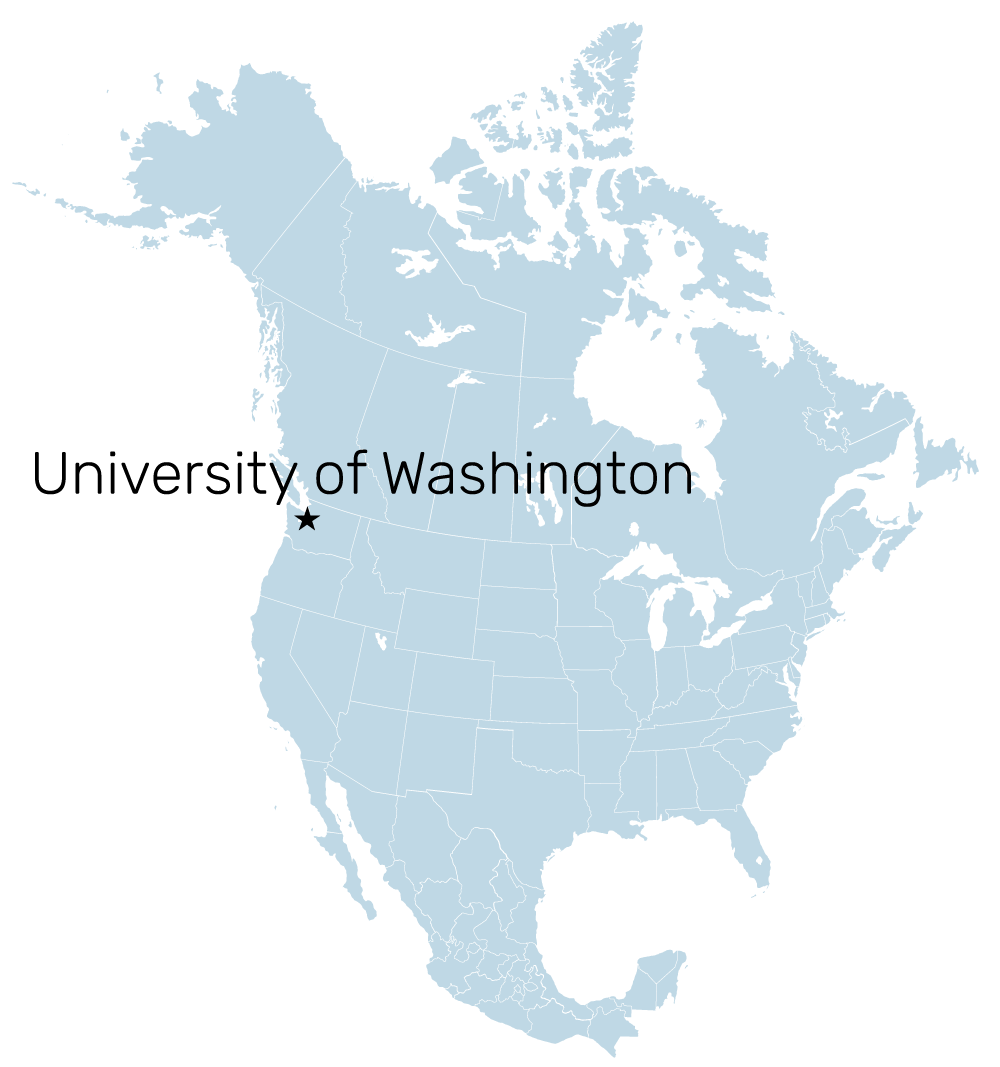

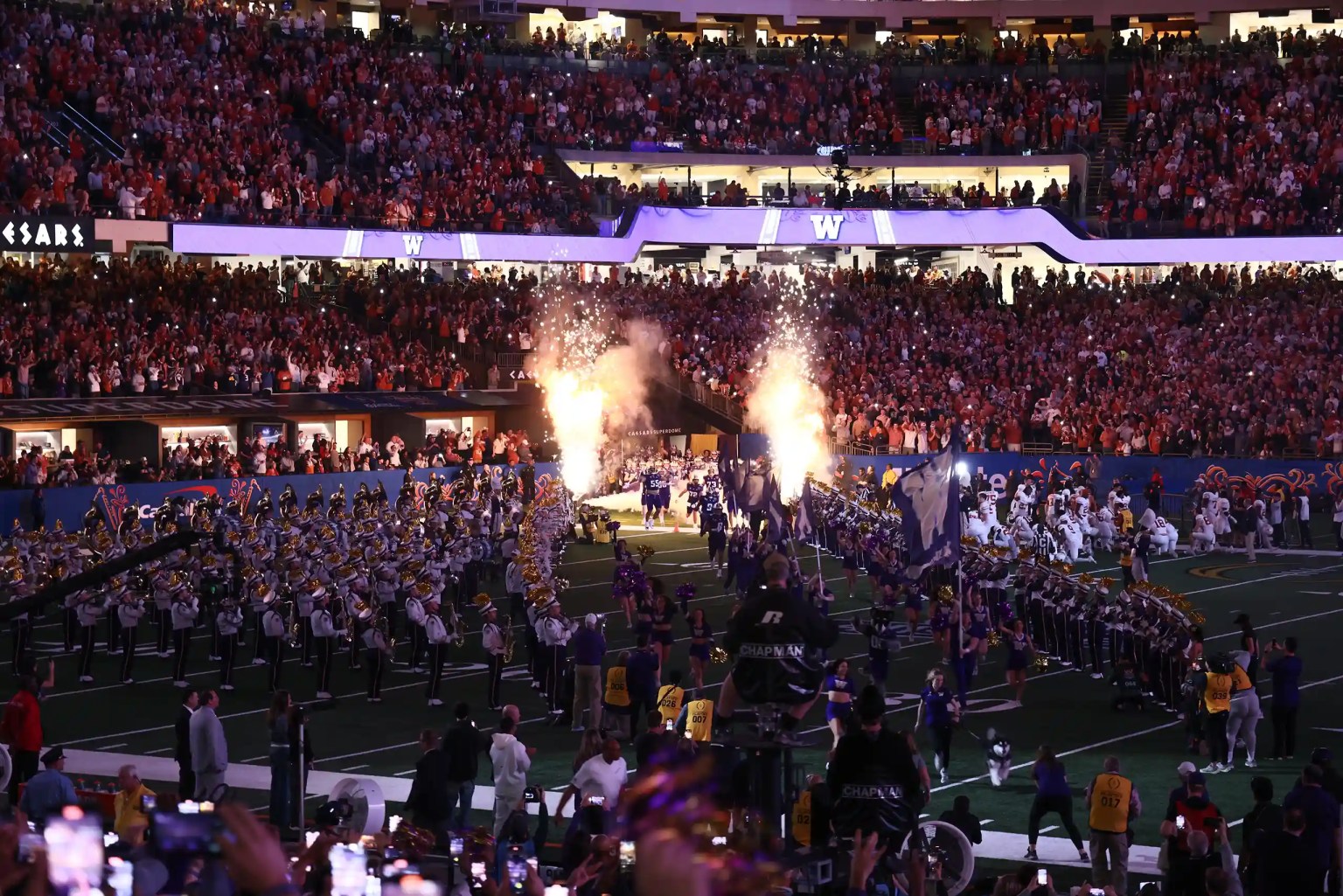
Social life & recreation